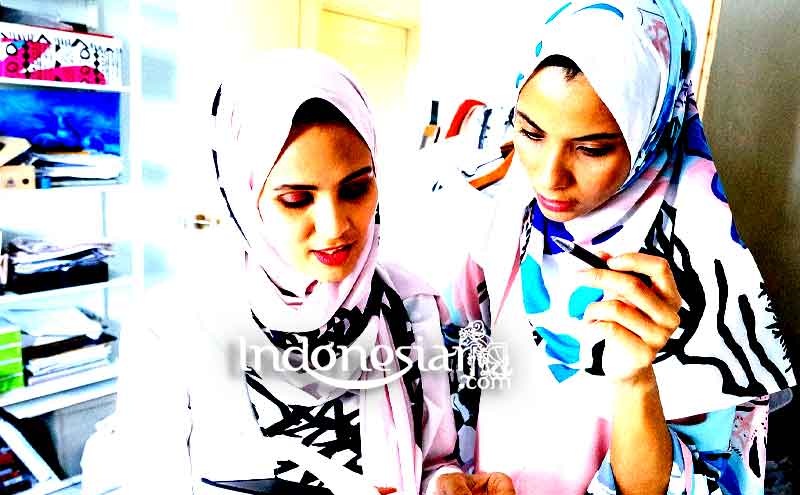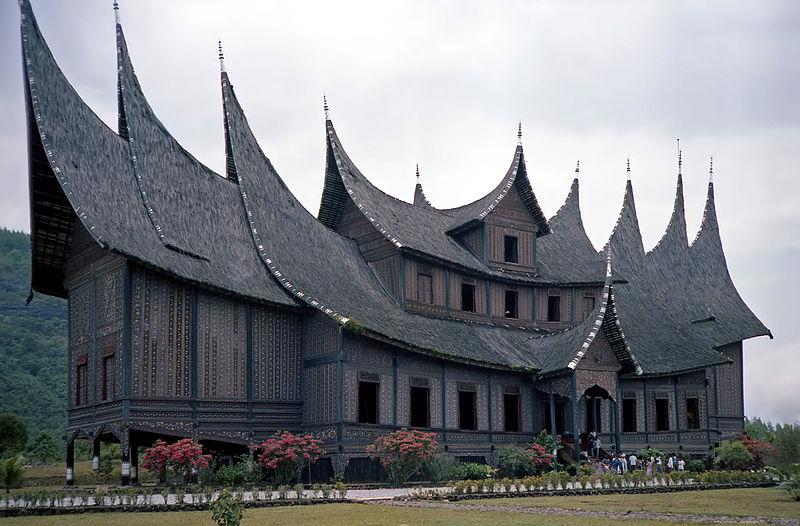Indonesia has a variety of wealth in the arts. One of the riches in the field of art is the Bukittinggi design from the province of West Sumatra. Quoted from the book by A Wachid, Hajjah Rosma and Nukilan Embroidery West Sumatra, published in 1997, it is stated that embroidery was brought by several former soldiers belonging to Governor General Stamford Rafless who had ruled Bengkulu since March 1818.
The Stamford Raffless soldiers came from Calcutta, India, and chose to go to Pariaman (West Sumatra) instead of returning to their country when Rafless ended his rule in Sumatra in 1822.
West Sumatra embroidery craft began to develop in 1960 and reached its peak in the era of the 1970s to early 1990s. One of the famous West Sumatra embroidery handicraft products is the designer.
Design embroidery is unique because it is a delicate embroidery creation by means of forming holes in the fabric container to be embroidered. Basically, all fabric base materials can be used as a container to design as long as you don’t use real silk fabrics. This is due to the design process, one of which is done by stretching the fabric. If the fabric used as the design container is too soft and smooth like silk, it is feared that it will be damaged and will not be optimal.
According to art observer from the Indonesian Institute of the Arts, Padang Panjang Erizal, embroidery designs are sewn directly onto cloth containers such as mukena, veil, kebaya, kurung and koko shirts. There are also cloth for table mats, tablecloths or glasses, and pillowcases. The part that is generally designed is the edge or bottom of the fabric. Designer motifs are usually inspired by nature such as plants, animals, calligraphy, and others. There are at least 12 engineering techniques applied, including chair design, chisel, cross, broom, board, and cutting design. Combined with beautiful patterned embroidery such as pucuak rabuang (shoots of bamboo shoots), itiak home patang (ducks come home in the evening), or kaluak paku (curved ferns).
The colors used are contrasting combinations such as red and yellow, blue and red, purple and pink. There are also harmonious color combinations such as greenish yellow, reddish orange, bluish purple and matching color combinations, for example, dark and light brown, dark and light green and others.
Embroidery design observer Hery Suharsono in his book Design Motif Kerancang, Edges and Curves, tells that embroiders must take into account the pull of the thread to the fabric as the basic material. If the tension of the thread is too tight, the fabric around the outline will shrink.
On the other hand, if the thread tension is less tense, then the design braid will be less dense and tight and prone to breaking because the tension of the embroidery thread is not the same. He said the products produced by craftsmen and designers were no longer just ordinary embroidery but were a piece of art of high value.
The process of making designer embroidery is so complicated and time-consuming because it is done manually. Only assisted by a rocking sewing machine or what the local community calls a black machine according to the color of the sewing machine.
It took each tailor at least a week to complete the custom embroidery on a simple fabric container. The more designer embroidery in a piece of cloth that must be done, the longer it will take to complete. Moreover, if the embroidery motifs are many and complicated, the finishing process can take up to a month.
One of the main centers of design production in West Sumatra is in the city of Bukittinggi. In fact, since 2007, the government has designated this cool city as a national designer embroidery cluster.
As technology advances, nowadays there are many sophisticated sewing machines with computer programs. The production process can be faster with many results. One motif can be done by dozens or even dozens of machines. Costs for labor can also be reduced. This makes many craftsmen switch to using the tool and leave the old method because it is ineffective and efficient.
However, this is not the case for Rina, an embroidery craftsman from Campago Guguak Bulek Village, one of two sub-districts in Bukittinggi that has been designated a designer village by the Industry and Trade Office of the City of Bukittinggi since 2008. Rina, who has been in business for more than 15 years in the business of producing embroidery and design embroidery admitted that he still maintains production based on manual sewing machines.
Moreover, consumers generally still give better appreciation to design products and are willing to pay more than products produced from computer machines. Designer embroidery on mukena products, for example, is generally offered from Rp. 300,000 to Rp. 4 million. Moreover, the motives on each product are never the same. The buyers are generally domestic tourists and tourists from Malaysia. “There is a value of taste and work that cannot be measured simply by sewing it on a computer machine, although currently there is a decline in sales due to the Covid-19 pandemic,” said Rina.
Quality is a mandatory requirement so that the craft remains at the forefront. In addition, variations of motifs that are adapted to the times and market tastes as well as product exclusivity are guaranteed in itself. Therefore, if you are visiting Bukittinggi, don’t forget to buy embroidery craft products made by local craftsmen.
Source : Indonesia






